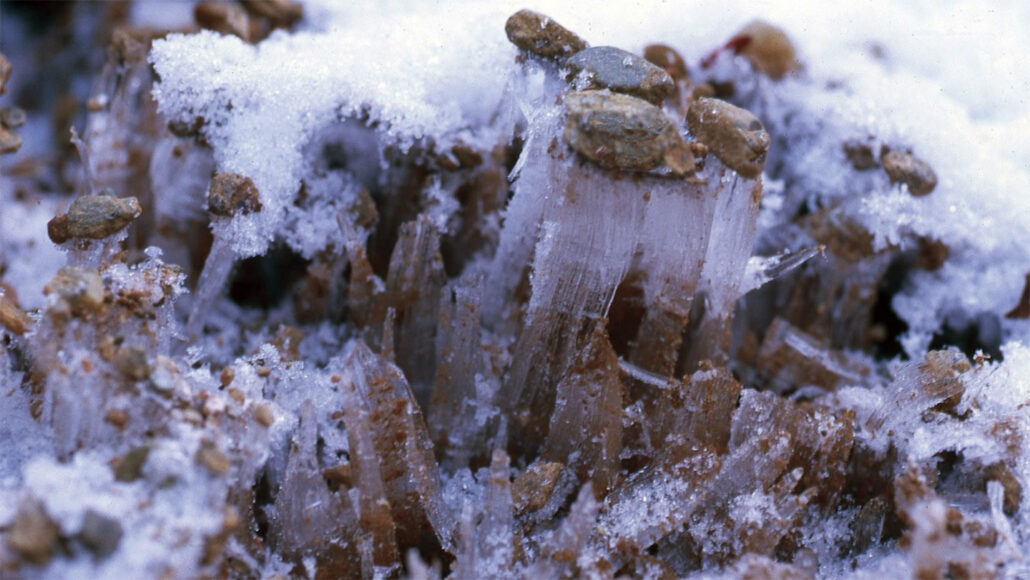Questions for ‘Here’s how ice needles can sculpt natural rock art’

Ice needles form from the moisture in soil as the air reaches freezing temperatures. Often, as seen here, pebbles and soil are pushed up by needles of the rising ice. When temperatures warm and the ice needles collapse, the pebbles will fall to the side.
Michael Burznyski